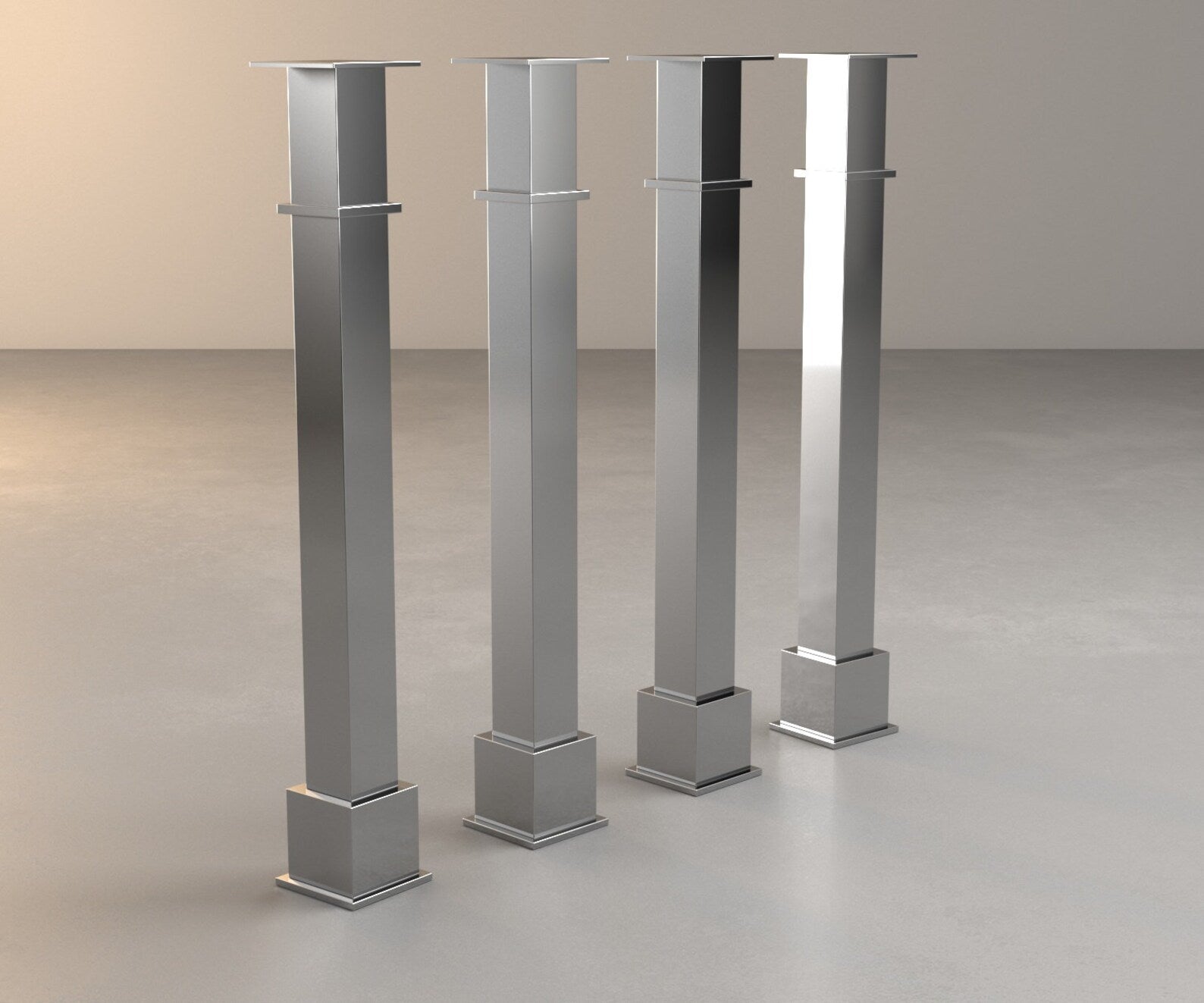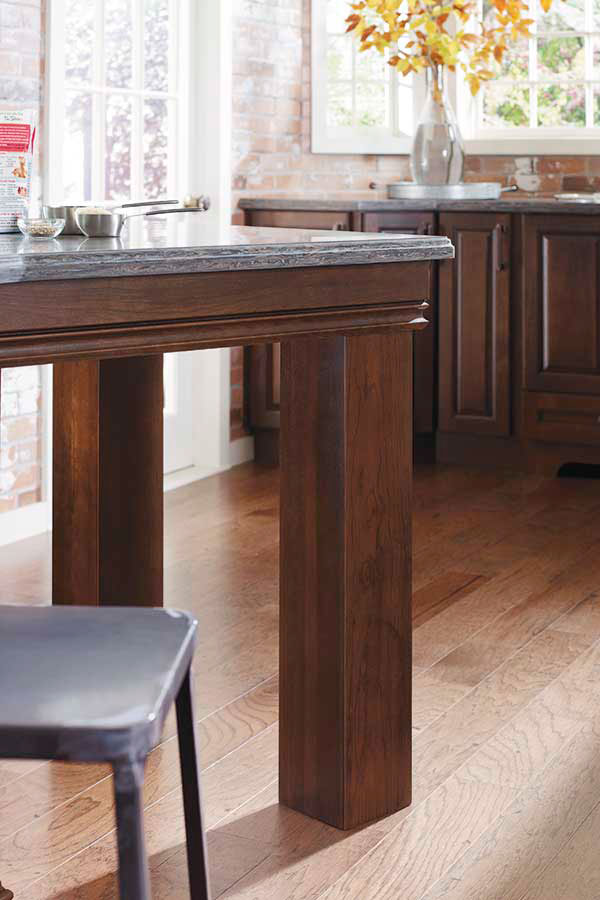Important Elements to Consider When Selecting Legs For Kitchen Island
Choosing the ideal legs for a kitchen area island involves a cautious analysis of several factors that can dramatically affect both performance and visual appeal. As we check out these aspects, it comes to be clear that each decision can have significant implications for the general cooking area experience.
Material Options
When choosing legs for a cooking area island, comprehending the numerous material choices is crucial for achieving both visual allure and structural stability (Legs For Kitchen Island). The selection of material considerably affects not just the sturdiness of the island yet additionally its overall style and capability
Wood is a prominent option, supplying heat and versatility. Solid hardwoods, such as oak or maple, supply toughness and can be discolored or painted to match the kitchen area style. Steel legs, frequently made from stainless steel or functioned iron, add a commercial and modern feel while guaranteeing toughness and security. These products are immune to wear and can support substantial weight, making them excellent for bigger islands.
Another alternative is crafted materials, like MDF or plywood, which can be much more cost-effective while still providing a range of finishes. Nonetheless, they might not supply the exact same level of security as strong timber or metal. Products such as acrylic or glass can create a modern appearance, though they may call for extra support to make certain security.
Eventually, the selection of product for kitchen island legs should line up with the desired capability and the general theme of the cooking area.
Design And Style

When considering style, the form and coating of the legs are essential. Tapered legs can provide a sense of agility and sophistication, while thicker, much more robust legs can convey stamina and stability. In addition, the surface-- be it painted, stained, or natural-- ought to complement the cabinetry and countertop materials to create a unified appearance.
In addition, the layout of the legs can additionally show personal taste. Custom or attractive legs, such as those including complex makings or special geometric forms, can act as prime focus, including personality and character to the kitchen area. Ultimately, the appropriate selection will not only boost performance however also boost the aesthetic appeal, making the kitchen island a standout attribute of the home.
Elevation Considerations
Choosing the ideal height for kitchen island legs is critical, as it straight impacts both functionality and convenience. The conventional height for a cooking area island normally ranges from 36 to 42 inches, straightening with typical countertop heights. A 36-inch elevation is optimal for food preparation and food preparation, enabling comfy use of cooking area home appliances and devices. On the other hand, an elevation of 42 inches is frequently preferred for islands meant for bar seats, fitting taller feceses and offering a laid-back dining experience.

It is additionally essential to make up individuals' preferences and heights. Personalizing the height can read make certain a comfy experience for all relative, making the cooking area island a much more pleasurable and useful room.
Weight Support
Ensuring appropriate weight support for kitchen island legs is essential for both security and functionality. The kitchen area island frequently offers multiple objectives, including cooking, dining, and added storage, demanding a robust assistance structure. When choosing legs, it is crucial to think about the overall weight capability called for based on the island's planned use and the products that will certainly be put on it.
The selection of material for the legs plays a considerable duty in their weight-bearing capabilities. Strong timber, metal, and sturdy composites normally give exceptional stamina contrasted to lighter materials. Furthermore, the style of the legs-- whether they are right, tapered, or have a pedestal form-- can influence their ability to distribute weight successfully throughout the framework.
Always seek advice from the supplier's requirements pertaining to lots restrictions to make certain that the legs can maintain the designated weight without jeopardizing safety. In summary, selecting kitchen island legs with sufficient weight support is essential for developing a useful and risk-free culinary space.
Installation and Maintenance
Appropriate installment and maintenance of kitchen island legs are critical for making certain durability and security. This typically involves protecting the legs to the island base using proper fasteners, guaranteeing that the legs are level and lined up.
As soon as set up, normal maintenance is essential to preserve the honesty and appearance of the legs - Legs For Kitchen Island. For wooden legs, routine cleaning with a moist towel and application of suitable timber gloss can avoid dampness damage and preserve their coating. Steel legs might need a mild cleansing service to get rid of oil and grime, complied with by a completely dry cloth to stop corrosion development
Additionally, examine the legs regularly for signs of wear or damage, such as fractures or loose joints. Tightening screws or screws as required can also extend the life expectancy of the legs. By sticking to these installment and upkeep techniques, home owners can ensure that their cooking area island continues to be sturdy and aesthetically appealing for years to find.
Final Thought

Aesthetic coherence is vital in picking the design and design of legs for a kitchen area island, as these aspects substantially affect the overall atmosphere of the room. Conical legs can give a sense of lightness and beauty, while thicker, much more robust legs can communicate toughness and security.Picking the ideal height for cooking area island legs is essential, as it directly impacts both functionality and comfort. In summary, selecting kitchen island legs with sufficient weight support is vital additional hints for producing a risk-free and practical cooking room.
In verdict, choosing legs for a kitchen area island requires cautious consideration of various factors, consisting of product choices, style, height, weight support, and installation.
Comments on “Count On Expert Craftsmanship for Tailored Legs For Kitchen Island Ideas”